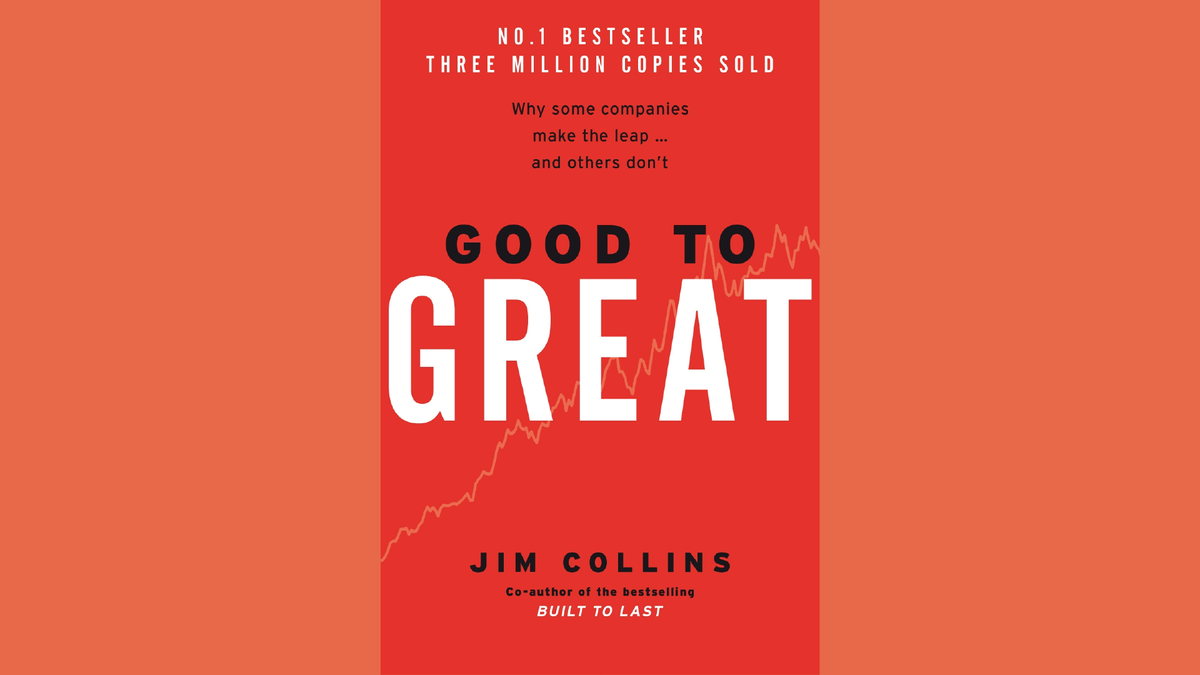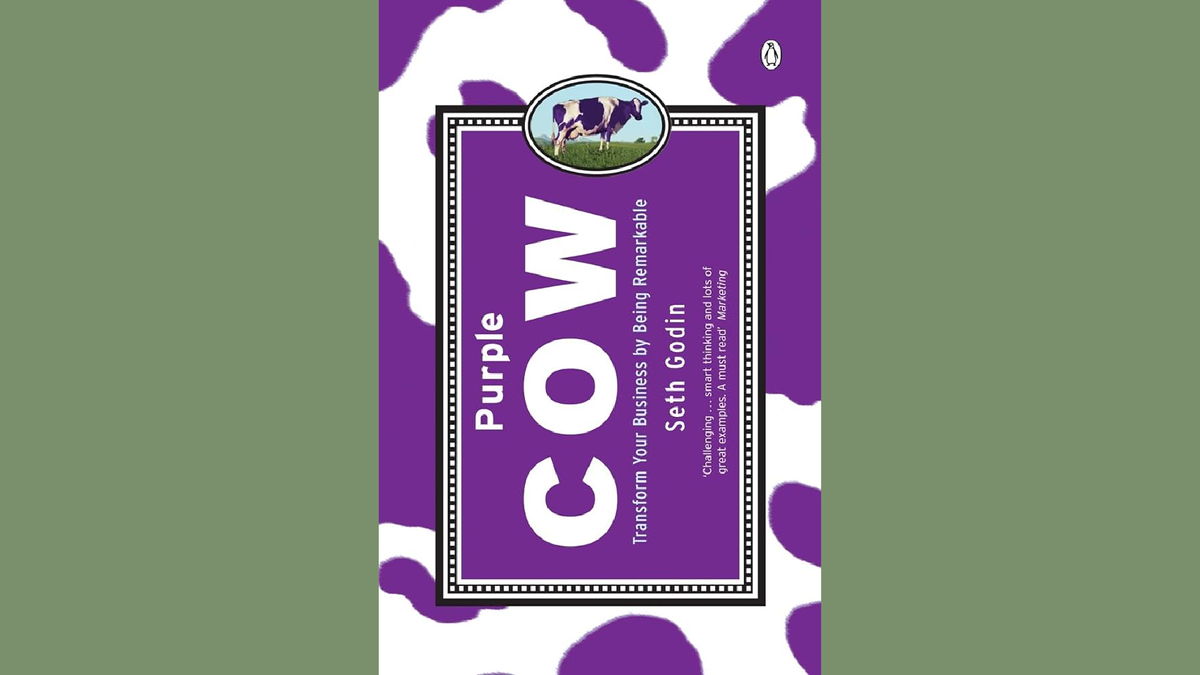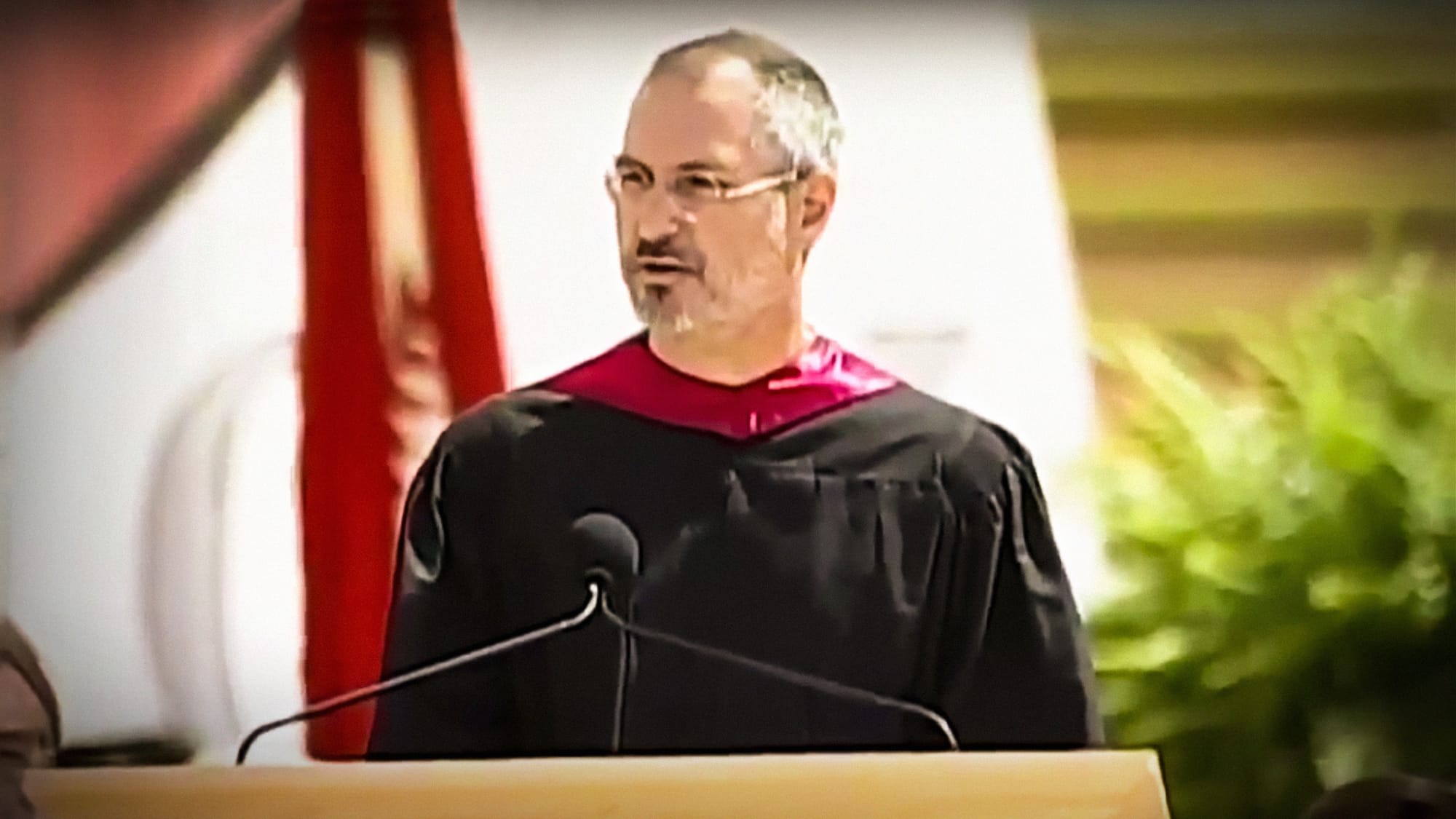The Best Moment to Breakthrough and Improve Business Performance
Discover how the most critical moments in leadership—when the pressure is highest—can lead to breakthroughs and improved business performance. Insights from Steve Jobs’s Apple turnaround and top business books.

Every founder or CEO knows that running a company is a journey full of challenges, triumphs, and moments that stretch us beyond our limits. But in every journey, there’s a moment when the stakes are at their highest—when all roads converge, and your decisions could change everything. This is the “Approach to the Inmost Cave,” a defining point where leaders face their most significant internal and external tests. It’s a time for deep strategy, bold thinking, and, sometimes, confronting our deepest fears. It’s also a time for transformation—not just for the company but for us as leaders.
For me, the “Inmost Cave” represents those moments when all the experience, passion, and energy I’ve put into the company is tested. It’s not just about external forces or market challenges. It’s personal. It’s when everything feels like it could either break or take off. I’ve learned from these moments that the best moment to break through and improve business performance is often when the pressure is highest. In these moments, preparation, vision, and resilience are everything.
Facing the Critical Decision
In the life of every founder, there comes a pivotal moment when you’re faced with a decision that could propel your company to greatness or leave you staring into the abyss. For some, it’s securing that critical round of funding. For others, it’s pivoting to a new business model or launching a game-changing product. It was about focusing the company’s energy in the right direction.
During my time at QUALITANCE, we had to make the bold choice to reshape our narrative completely. We weren’t just building software; we wanted to make software more human. That decision, that shift in focus, redefined our entire trajectory. It wasn’t easy, but it was the critical decision we needed to make at the right time to set ourselves apart in a crowded market.
“The right decision may feel like the hardest choice at the moment, but it’s the one that shapes everything that comes after.”
Confronting Internal Fears and Doubts
Fear is a constant companion at this stage. Imposter syndrome, self-doubt, and whether you’re equipped to lead can feel like shadows you can’t escape. And trust me, I’ve been there.
But here’s the thing: self-doubt is normal. It’s how we deal with it that matters. When I worked with the teams at TribalDDB in Amsterdam and London, I questioned whether I could help these solid and talented teams evolve. But instead of letting that doubt control me, I leaned into it. I focused on growing their leadership, and when I moved on, I realized that they had not only adapted but flourished.
“The measure of a leader isn’t how they face success, but how they walk through the fire of their fears—and come out stronger on the other side.”
Fear doesn’t disappear, but you can harness it. You can learn to make decisions that aren’t based on fear but on vision and clarity.
Strategizing for the Challenge Ahead
When you approach this critical moment, strategy is everything. You can’t just leap without looking. This is the time to take a step back, analyze the data, consult your mentors, and craft a game plan.
At QUALITANCE, the decision to refocus on making software more human wasn’t made overnight. It came after listening to our clients, analyzing market trends, and gathering insights from thought leaders. Strategy is a living, breathing thing—it evolves with the company’s needs and the challenges of the moment. At this stage, a well-thought-out strategy can mean navigating through the cave or getting stuck inside it.
External Pressures and Stakeholders
External pressures are inevitable. Investors are demanding rapid growth, competitors are closing in, and the media can amplify every misstep. At this stage, it’s easy to feel overwhelmed by the voices around you.
But here’s what I’ve learned: it’s all about vision. You can guide your team and stakeholders through the noise when you have a clear vision. At QUALITANCE, when we developed our story of “Making Software More Human,” it wasn’t just for marketing purposes. It became a beacon that aligned our entire company and excited external stakeholders. That clarity helped us overcome the pressures of market expectations and maintain our focus.
“Clarity in vision doesn’t silence the noise—it allows you to rise above it.”
Testing Relationships and Loyalty
At this stage, your team will be tested. Do they trust your vision? Are they ready to follow you through the most challenging moments? And perhaps more importantly, are they equipped to lead in your absence?
When I worked with the teams at TribalDDB, I witnessed how investing in people’s growth created leaders who didn’t just rely on me. After I moved to the USA, both teams continued to evolve and improve. That experience taught me authentic leadership is about empowering others to succeed, even when you’re no longer there.
“Their presence doesn’t measure a true leader’s legacy, but by the strength of the leaders they leave behind.”
Personal Growth and Transformation
This stage isn’t just a test for the company. It’s a test for you. As a founder, you’re constantly evolving. I’ve learned that to guide my company through tough times, I have to grow as well. You can’t lead a company into the future with yesterday’s mindset.
During these moments, I’ve had to shed old ideas, embrace new strategies, and, sometimes, change how I see myself as a leader. Growth isn’t easy, but it’s essential. If you’re not evolving, your company won’t either. The “Inmost Cave” is where that transformation takes place.
“Transformation is not the result of survival—it’s the reward for daring to grow.”
Risks of Failure vs. Rewards of Success
Let’s face it—at this stage, the risks are real. But so are the rewards. The “Inmost Cave” is a place where failure looms but also where breakthroughs happen.
I’ve learned not to fear failure because I’ve become stronger each time I face it. Whether it’s launching a new product that didn’t hit as expected or pivoting a business model in the face of competition, the lessons you gain from failure are invaluable. But the rewards can change everything when you succeed—it pays off when you take that bold step.
“Failure is not the opposite of success; it’s the proving ground where resilience is born.”
Building Resilience
Resilience is the secret sauce. No matter how prepared you are, things won’t always go according to plan. Your ability to bounce back, learn from setbacks, and keep moving forward will ultimately determine your success.
Reflecting on my career, I’m proudest of the moments when resilience led to a breakthrough. It’s about learning, adapting, and coming back stronger. The journey to the “Inmost Cave” is long and tests you at every turn. But resilience is what will see you through.
“Resilience is not just surviving the storm; it’s the strength to rebuild once the skies clear.”
Related Reading to Improving Your Business
In the ever-evolving journey of entrepreneurship, having the right resources and insights can make all the difference when navigating critical moments in business. Two essential reads that have profoundly shaped my leadership approach are Good to Great by Jim Collins and Purple Cow by Seth Godin. These books don’t just offer business strategies—they challenge us to think deeply about creating a lasting impact within our organizations and the market. Let’s dive into key takeaways that resonate powerfully during your “Approach to the Inmost Cave.”

Good to Great by Jim Collins
In Good to Great, Jim Collins explores why some companies leap from being just good to truly great while others remain stuck in mediocrity. For any founder or CEO facing a pivotal decision, this book offers a roadmap to achieving greatness through disciplined thought, action, and leadership.
Level 5 LeadershipCollins introduces the concept of Level 5 Leadership—a unique blend of personal humility and professional will. Leaders at this level aren’t driven by ego or personal recognition but by the success of their organization and its long-term vision. They make tough, sometimes unpopular decisions that ultimately shape the company’s future. At the “Inmost Cave,” when every decision feels heavy with consequence, the principles of Level 5 Leadership remind us that greatness is not about flashy moves or quick wins—it’s about the quiet, relentless pursuit of a larger purpose.
In my journey at QUALITANCE, I had to make tough choices about reshaping our entire focus. It wasn’t about building software that just worked—it was about creating software that felt more human, more connected to the people using it. The decision wasn’t easy, but Level 5 Leadership taught me that the right decision is often the hardest. It requires the humility to listen deeply to your team and market and the willpower to push through fear and uncertainty.
Getting the Right People on the Bus
Collins also emphasizes the importance of getting the right people on board before knowing where the bus is going. As a founder, this lesson is vital when approaching your “Inmost Cave.” You’re at a critical juncture, and you need the right people by your side—those who believe in the vision and have the skills, passion, and tenacity to help you execute it.
In high pressure, rushing decisions or keeping people in roles they may not be suited for is tempting. However, Collins’ research shows that great companies take the time to ensure they have the right people in the right seats. This approach allows you to move forward confidently, knowing that when you’re ready to make bold moves, your team is aligned and capable of leading alongside you.
The Hedgehog Concept
The Hedgehog Concept, another cornerstone of Good to Great, asks three critical questions: What can your company be to be the best in the world? What drives your economic engine? And what are you deeply passionate about? As a leader standing at the edge of transformation, clarity on these three factors is critical.
We leaned heavily on this concept when we shifted our focus to QUALITANCE. We realized that while many companies could build software, few could do it with the human-centered approach we were passionate about. That clarity guided us through the most challenging decisions, helping us break through and emerge stronger.

Purple Cow by Seth Godin
In a world where fierce competition and markets are saturated, Seth Godin’s Purple Cow challenges us to stand out—not by following the crowd but by being remarkable. The book’s central thesis is simple yet profound: to thrive, you must create something so extraordinary, so different, that people can’t help but notice. This idea is especially relevant when approaching the “Inmost Cave,” when the pressure to innovate and make a mark is at its peak.
Remarkability as a Strategy
Godin argues that the key to success is being better and remarkable. Only those who dare to be different will genuinely thrive in a sea of similar products, services, and businesses. This lesson is compelling for founders at a crossroads. It’s not enough to be competent when you’re deep in the cave, facing a decision that could make or break your company. You need to be extraordinary. It would help if you created something people will talk about, share, and remember.
When we launched the idea of “Making Software More Human” at QUALITANCE, it was our Purple Cow. It was the standout element that set us apart in a crowded market. It wasn’t just software; it was an experience. I apply the same lesson to every business decision I make—whether launching a new product or pivoting the company’s direction, I ask myself: Is this remarkable? Will this stand out? Will people talk about it?
The Power of Bold Innovation
One of the biggest takeaways from Purple Cow is the idea that playing it safe is the riskiest move you can make. At this stage in your journey, defaulting to what’s comfortable or proven is easy. But Godin argues that the most remarkable companies are those willing to take bold risks and embrace the potential for failure in pursuit of greatness.
As founders, we constantly face external pressures—from investors, competitors, or the market itself. But Purple Cow reminds us that innovation doesn’t come from conforming to expectations. It comes from daring to be different. It’s about finding what makes your company stand out and pushing it to its fullest potential. For Apple, it was the iMac. For QUALITANCE, it was making software more human. For you, it’s whatever your unique strength is—the thing that no one else can do as well as you.
Turning Challenges into Opportunities
Finally, Purple Cow teaches us that challenges and constraints are often the very things that lead to remarkable innovation. When faced with financial, market-driven, or personal limitations, Godin encourages us to see them as opportunities to create something new and wonderful.
As I’ve navigated my own “Inmost Cave” moments, I’ve realized that the most significant breakthroughs often happen when our backs are against the wall. In these moments, we’re forced to think differently, innovate, and create something truly remarkable. The key is not to fear the Challenge but to embrace it as a catalyst for transformation.

Case Study: Steve Jobs – Reinventing Apple
Steve Jobs’s return to Apple in 1997 is a quintessential example of a founder confronting the “Inmost Cave”—a defining moment where bold decisions, strategic clarity, and personal growth intersected to create one of history’s most remarkable corporate turnarounds. Apple was on the verge of bankruptcy, losing its innovative edge. Jobs’s ability to reinvent Apple and himself during this stage offers valuable lessons for any founder facing a similar pivotal moment.
Background: Apple on the Edge of Collapse
When Jobs returned to Apple, the company was struggling. Bloated with product lines, inefficient leadership, and declining market relevance, Apple was facing bankruptcy. Jobs had been away from the company for over a decade after being ousted, and the company had lost its way in his absence.
At this moment, Jobs wasn’t just returning to fix a company—he was returning to reclaim his legacy. His “Inmost Cave” was filled with personal and professional failure risks. But rather than play it safe, Jobs doubled down on innovation, simplicity, and bold decision-making.
Facing the Critical Decision: Radical Product Simplification
One of Jobs’s first moves upon his return was to radically simplify Apple’s product line. He reduced the offerings by 70%, eliminating underperforming products and focusing Apple’s resources on a few key innovations. This decision, though controversial at the time, was crucial to saving Apple from its bloated inefficiency.
Insight: This reflects the concept in “Good to Great” of getting the right people on the bus and the wrong people off. Jobs wasn’t afraid to make challenging, sweeping changes because he knew that for Apple to survive, it needed to regain focus. This willingness to make hard decisions, even at the cost of short-term criticism, is a hallmark of a leader navigating their “Inmost Cave.”
Strategizing for the Challenge Ahead: The iMac
The first major product release under Jobs’s leadership was the iMac in 1998. This wasn’t just another computer—a bold, colorful, and user-friendly device designed to stand out in a market filled with boring beige boxes. The iMac’s design directly applied Seth Godin’s “Purple Cow” philosophy: make something so remarkable that it can’t be ignored.
Jobs understood that Apple needed to be different to survive. The iMac became an instant success and set the tone for the company’s future direction: beautifully designed products that marry form and function.
Analysis: The iMac wasn’t just a computer—it was a symbol of Apple’s reinvention. It communicated to the world that Apple was back and willing to take risks to stand out. For any founder approaching their “Inmost Cave,” the lesson is clear: strategic innovation that aligns with your core strengths and vision can be the key to turning things around. But it requires bold thinking and a willingness to embrace the remarkable.
Risks and Rewards: Launching the iPod
Perhaps one of Jobs’s most significant risks was launching the iPod in 2001. At the time, Apple was primarily a computer company, so venturing into the music space was seen as a bold—and risky—move. However, Jobs understood that to truly reinvent Apple, the company needed to push boundaries and enter new markets.
The iPod wasn’t just a music player; it was the gateway to Apple’s broader ecosystem, eventually leading to the creation of the iPhone and the App Store. This decision reflected Seth Godin’s philosophy of being remarkable—the iPod was unlike anything else on the market.
Insight: Jobs didn’t just save Apple from bankruptcy—he turned it into one of the most valuable companies in the world by embracing innovation and pushing Apple into uncharted territory. The iPod wasn’t a safe bet but a calculated risk that paid off exponentially. For founders in their “Inmost Cave,” this is a powerful reminder: sometimes, the boldest moves carry the most significant rewards.
Personal Transformation: The Return of a Wiser Leader
Jobs’s return to Apple wasn’t just about saving a company and redeeming himself as a leader. Steve Jobs, who returned in 1997, was more mature, collaborative, and strategic than the fiery young founder who had been ousted in the 1980s.
His transformation mirrors the Level 5 Leadership Collins describes in “Good to Great.” Jobs was still driven, but he had learned to temper his ambition with the humility needed to build a cohesive team. He surrounded himself with talent and allowed others to share in the creative process, something he had struggled with earlier in his career.
Analysis: This personal growth was crucial to Apple’s turnaround. Jobs’s ability to learn from his failures and evolve into a more effective leader is an essential lesson for any founder facing their own “Inmost Cave.” Leadership isn’t just about vision; it’s about being willing to grow and adapt to meet the moment.
Taking Bold Risks
Godin emphasizes that to be remarkable, you have to take risks—and risk often involves the fear of failure. Risk can feel overwhelming for founders at the “Inmost Cave” stage, but it’s also necessary for breakthrough success. The willingness to take calculated risks often determines whether a company remains stagnant or leaps forward.
Conclusion: The Best Moment to Breakthrough and Improve Business Performance
The “Approach to the Inmost Cave” is one of the most critical moments in a founder’s journey. It’s where you face the most significant challenges to your company’s future and yourself as a leader. But it’s also where transformation happens.
The best moment to break through and improve business performance comes when facing the most significant obstacles. Whether confronting internal doubts, crafting a clear vision, or taking bold risks, leaders are made in this stage. It’s not just about navigating your company through tough times; it’s about becoming the leader your company needs for the next chapter.



